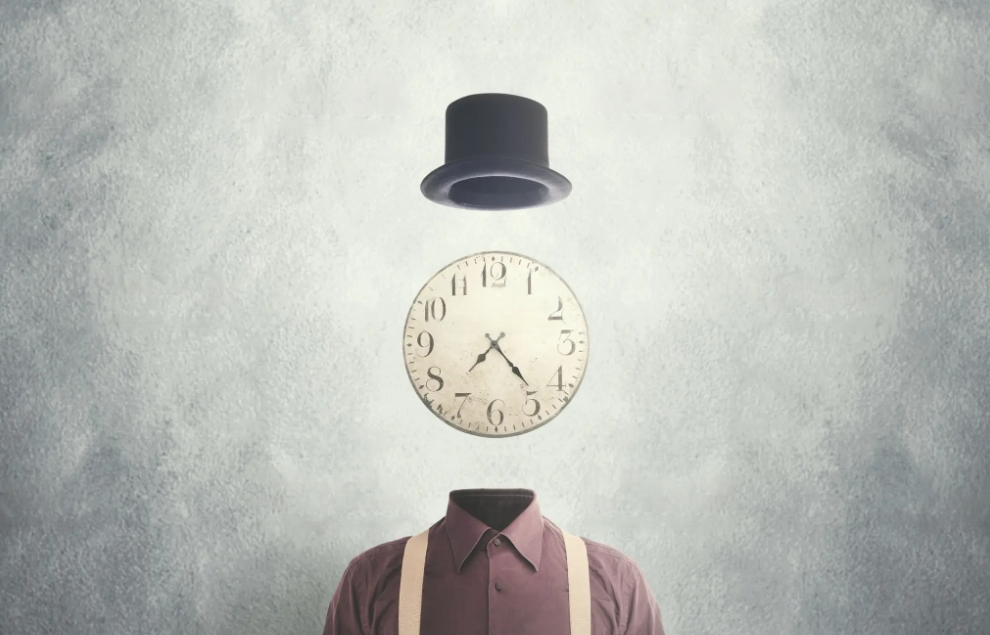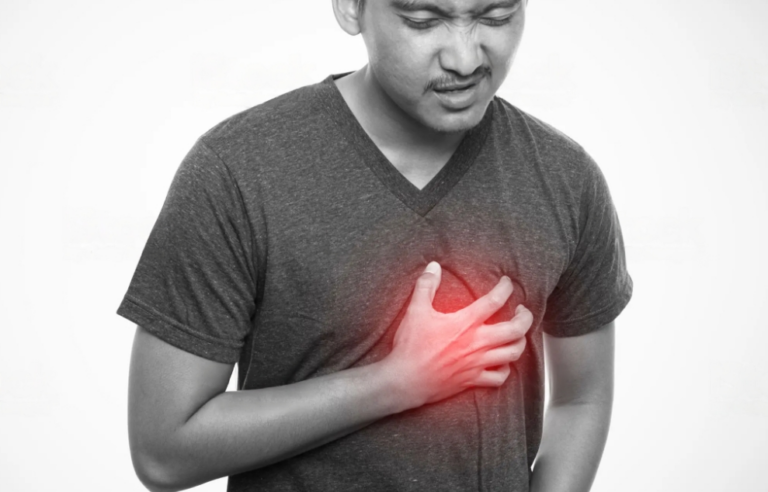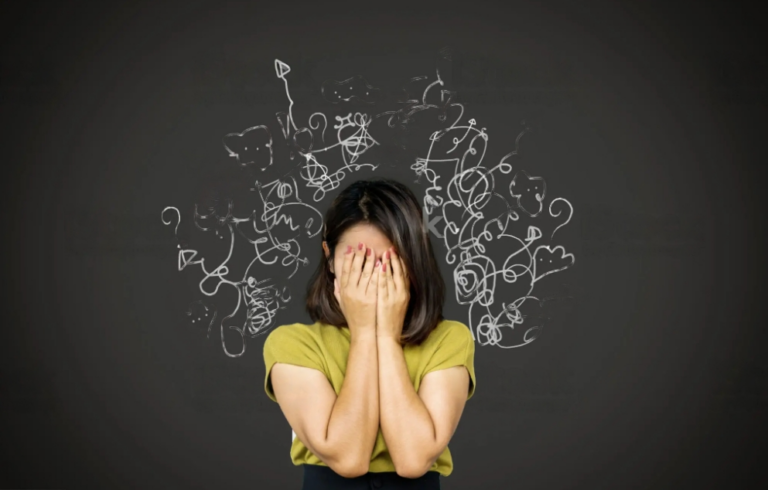How Long Does Panic Attack Last? Understanding the Duration and Seeking Help
How Long Does Panic Attack Last? Understanding the Duration and Seeking Help
Explanation of panic attacks
Panic attacks are intense episodes of fear and distress that can occur suddenly and without warning. They are a crucial feature of panic disorder, a type of anxiety disorder characterized by recurrent and unexpected panic attacks. During a panic attack, individuals experience overwhelming fear and anxiety, accompanied by various physical and psychological symptoms. The question is, How Long Does Panic Attack Last?
It is important to note that various factors, including traumatic events or high-stress levels, can trigger panic attacks. They should not be confused with anxiety attacks, which differ in intensity and duration. While panic attacks are relatively short-lived, anxiety attacks tend to be more prolonged and are often associated with specific triggers or ongoing worry.
Importance of understanding the duration of panic attacks
The duration of panic attacks can vary, but they typically reach their peak within a few minutes and subside gradually. Understanding the duration of panic attacks is crucial for several reasons. Firstly, it helps individuals recognize when they are experiencing a panic attack, enabling them to seek appropriate help and support. By identifying the symptoms rather than a life-threatening event, individuals can alleviate some of the distress associated with the experience.
Additionally, comprehending the duration of panic attacks can reassure individuals who fear the symptoms will last indefinitely. Recognizing that panic attacks are time-limited can help individuals cope better during the episodes and reduce anticipatory anxiety about future panic attacks. In addition, it allows them to focus on implementing effective coping strategies and accessing appropriate treatment options to manage their panic disorder.
Understanding the nature and duration of panic attacks is essential for promoting mental health and well-being. By raising awareness about panic disorder and its associated symptoms, individuals can seek timely support, improve their coping mechanisms, and take proactive steps toward managing future panic attacks.
Understanding Panic Attacks
What are panic attacks?
Panic attacks are sudden episodes of intense anxiety and fear that can be overwhelming and distressing. During a panic attack, individuals may experience various physical and psychological symptoms, including a racing heartbeat, shortness of breath, chest pain, dizziness, sweating, trembling, and a sense of impending doom. These symptoms can be so severe that individuals may fear having a heart attack or losing control.
Most panic attacks peak within a few minutes to half an hour and then gradually subside. However, the effects of a panic attack can linger, leaving individuals feeling exhausted and emotionally drained. It’s important to note that experiencing a panic attack does not necessarily mean a person has a panic disorder. Instead, panic disorder is diagnosed when individuals have recurrent panic attacks and live in constant fear of having further attacks.
Several risk factors can contribute to developing panic attacks and panic disorder. These can include a family history of panic disorder, traumatic experiences, high levels of stress, and excessive anxiety. Understanding the symptoms of a panic attack, recognizing risk factors, and seeking appropriate support are crucial steps in effectively managing and treating panic attacks. With the help of mental health professionals, individuals can learn coping strategies to reduce the frequency and impact of panic attacks, improving their overall well-being.
What causes panic attacks and triggers panic attacks
Panic attacks can have various causes and triggers, making it crucial to understand their underlying factors. Common triggers include high-stress levels, traumatic experiences, particular phobias, and a family history of panic disorder or other mental health conditions. Additionally, substance abuse, such as excessive caffeine or drug use, can worsen panic attacks. Finally, it’s important to note that frequent panic attacks can be symptomatic of an underlying anxiety disorder, which may require professional intervention.
The onset of a panic attack is often marked by intense and overwhelming feelings of anxiety, accompanied by physical symptoms such as a racing heartbeat, shortness of breath, and dizziness. Recognizing the connection between anxiety and panic can help individuals identify triggers and manage their symptoms more effectively. In addition, seeking therapy or counselling can provide valuable tools to cope with anxiety and reduce the likelihood of panic attacks.
For children who experience panic attacks, providing a supportive environment where they feel comfortable expressing their emotions is essential. In addition, understanding the potential causes and triggers of a child’s panic attacks can aid in implementing appropriate strategies to address their needs. If left untreated, panic attacks can negatively impact daily life and potentially lead to physical harm. To receive the necessary support and guidance, seeking professional help is crucial for those struggling with frequent panic attacks or related mental health conditions.
Fight or flight response
Frequent attacks of panic, known as panic disorders, are intricately linked to the body’s fight or flight response—an intuitive mechanism for survival. This response is activated when the mind perceives a threat, prompting the release of stress hormones like adrenaline. Typically, this prepares the body to confront or flee from the danger at hand. However, in the context of panic attacks, this response occurs even without a genuine threat.
Consequently, individuals experience a sudden surge of intense physical sensations and extreme fear, resembling an anxiety attack. Recognizing that these episodes are not indicative of actual danger but rather a manifestation of heightened anxiety or panic is essential. Managing such conditions is crucial to prioritize mental health and adopt strategies to reduce stress levels.
Symptoms of a Panic Attack
Psychological and Physical Symptoms
During a panic attack, individuals may experience the following physical and psychological symptoms:
Physical symptoms:
- Chest pain
- Shortness of breath
- Rapid heartbeat
- Trembling or shaking
- Dizziness
- Sensation of choking
Psychological symptoms:
- Intense fear
- Fear of losing control
These symptoms can be distressing and overwhelming for those experiencing a panic attack.
It is important to note that these symptoms are not indicative of a physical ailment but are instead characteristic of a mental health condition. Panic attacks can arise from severe anxiety attacks and are often associated with anxiety disorders such as panic disorder. The physical symptoms experienced during panic attacks can be alarming, leading to increased anxiety and making subsequent panic attacks worse.
Understanding the interplay between physical and psychological symptoms is crucial in managing panic attacks and related mental health conditions. Seeking support from mental health professionals can provide individuals with effective coping strategies and treatment options tailored to their needs. In addition, by addressing both the physical and psychological aspects of panic attack and anxiety symptoms, individuals can work towards achieving better overall well-being and quality of life.
Role of Duration in Symptoms
The duration of a panic attack is an essential factor in recognizing and effectively managing symptoms. Typically, panic attacks last a few minutes, although some can extend up to half an hour. Understanding the duration helps differentiate between panic attacks and other conditions like anxiety attacks or severe panic disorder. In addition, recognizing that the symptoms are time-limited can provide reassurance and alleviate the fear and anxiety associated with panic attacks.
However, if panic attacks occur frequently or persist for extended periods, it may indicate a more severe condition. In such cases, seeking professional help and implementing appropriate strategies to manage symptoms becomes crucial for overall well-being and effectively addressing anxiety and panic-related concerns.
Duration of Panic Attacks
Typical Factors and Duration of Panic Attack
The typical duration of a panic attack can vary, but it usually lasts for a few minutes, typically less than half an hour. During this time, individuals experience a surge of overwhelming feelings and symptoms of panic, including rapid heartbeat, shortness of breath, chest pain, and a sense of impending doom. However, the duration of a panic attack can be influenced by several factors.
Factors that can influence the duration of a panic attack include the intensity of symptoms, individual differences, and other anxiety disorders. For example, some individuals may have shorter or longer panic attacks based on physiological and psychological responses. Additionally, suppose a person has a co-occurring anxiety disorder, such as generalized anxiety disorder or post-traumatic stress disorder. In that case, the underlying anxiety condition may influence the duration of panic attacks.
Taking proactive steps to prevent panic attacks and manage their duration is essential. Seeking professional help, such as therapy or medication, can provide practical strategies for coping with panic attacks. In addition, learning relaxation techniques, practicing stress management, and engaging in regular exercise can also help reduce the frequency and duration of panic attacks.
Short vs. long-lasting panic attacks
- Short panic attacks:
- Duration: Few minutes, typically less than half an hour.
- Symptoms: Intense fear, rapid heartbeat, shortness of breath, sense of impending doom.
- Long-lasting panic attacks:
- Duration: Extended period, ranging from several minutes to hours.
- Symptoms: Intense fear, physical symptoms persisting over time.
- Impact: Distressing and may require additional intervention or support.
Understanding the duration of panic attacks is crucial in diagnosing and managing panic disorder. It allows for appropriate treatment approaches and strategies to be implemented for symptom relief. Recognizing the distinction between short and long-lasting panic attacks helps healthcare professionals tailor interventions to individual needs, ensuring practical support for individuals experiencing panic disorder. By addressing the duration of panic attacks, healthcare providers can better assist individuals in managing and coping with their symptoms, promoting improved quality of life and overall well-being.
Coping Strategies for Panic Attacks
Breathing exercise
Coping with panic attacks can be challenging, but there are effective strategies to help manage the overwhelming symptoms. One such approach is utilizing breathing techniques, which can help regulate your body’s response and promote a sense of calm during a panic attack. Here are some different breathing exercises you can try:
- Diaphragmatic breathing or belly breathing: Breath slowly through your nose, filling your lungs and lifting your belly. Breathe out slowly through your mouth, letting your belly lower. Repeat this process multiple times.
- Box breathing: Take a deep breath through your nose for four counts, hold it for four counts, exhale slowly through your mouth for four counts, and hold your breath again for four counts. Repeat this pattern
- 4-7-8 deep breathing: Breath silently through your nose for four counts, hold your breath for seven counts, and exhale through your mouth for eight counts. Repeat this cycle
These techniques can help reduce hyperventilation, regulate breathing, and alleviate physical symptoms like rapid heartbeat and shortness of breath. By focusing on your breath and engaging in intentional breathing, you can regain control over your body and alleviate some anxiety and fear accompanying panic attacks. Remember to practice these exercises regularly to develop a greater sense to calm anxiety.
Relaxation exercises
It is vital to use different strategies to relieve symptoms and improve emotional well-being in coping with panic attacks and managing anxiety effectively. Relaxation exercises, like deep breathing and muscle relaxation techniques, help regulate breathing and reduce physical symptoms such as a fast heartbeat and difficulty breathing. Activities like meditation, mindfulness, and yoga also enhance relaxation and stress management, which can help control stress and prevent future panic attacks. These approaches enable individuals to regain control, calm their minds and body, and promote overall well-being.
Treating anxiety and managing panic attacks also involves addressing the underlying causes of stress and fear. It is important to identify triggers that contribute to the onset of panic symptoms and develop effective strategies to manage them. This may include implementing stress-reduction techniques, such as regular exercise, getting enough sleep, and practicing self-care.
Seeking professional help and therapy can provide valuable support in understanding and managing anxiety disorders and panic attacks. With the right coping strategies, individuals can take proactive steps to prevent panic attacks, calm anxiety, and improve their overall mental health and well-being.
Mindfulness and meditation
When coping with panic attacks, incorporating mindfulness and meditation practices into your routine can be highly beneficial. Mindfulness involves focusing on the present moment and accepting your thoughts and feelings without judgment. By cultivating this awareness, you can better manage the overwhelming symptoms of panic and anxiety attacks.
Conversely, meditation allows you to direct your attention inward and cultivate a calm state of mind. Regular mindfulness and meditation practice can help you manage stress, prevent panic attacks, and promote overall mental well-being. While these strategies can be helpful, it’s essential to seek treatment from a mental health professional and undergoing a thorough physical examination are also vital steps in managing panic attacks and other mental health conditions effectively.
Cognitive-behavioural therapy
Cognitive-behavioural therapy (CBT) is an effective and evidence-based approach when coping with panic attacks and treating panic disorder. CBT focuses on identifying and challenging negative thought patterns and behaviours contributing to panic attacks. This therapy teaches individuals to reframe their thoughts, develop coping mechanisms, and gradually face their fears in a controlled and supportive environment. In addition to CBT, medication can also be used to manage panic disorder.
SSRIs, a common prescription, regulate serotonin in the brain, reducing anxiety and preventing future attacks. Anti-anxiety meds provide short-term relief during intense episodes. Consult a mental health professional to thoroughly assess your medical history and physical health to determine the best treatment plan. These strategies help not only with panic attacks but also with other mental health conditions like anxiety attacks.
Medications for Panic Attacks
Types of medications
Various types of medications are commonly used to treat mental health conditions. A variety of medications are frequently prescribed as part of the treatment regimen:
- Antidepressants: Medications like selective serotonin reuptake inhibitors, SSRIs and SNRIs are frequently prescribed for treating depression, anxiety, and panic disorders. These medications help regulate neurotransmitter levels in the brain, promoting a more balanced state.
- Anti-anxiety medications: These medications, including benzodiazepines, are used to manage symptoms of anxiety and panic attacks. They provide short-term relief by reducing excessive anxiety and promoting relaxation.
- Mood stabilizers: These medications are primarily used to manage bipolar disorder and stabilize mood fluctuations. They help regulate the highs and lows associated with the condition.
Pros and cons of medication
Medications can effectively manage mental health conditions and improve overall well-being. However, it is crucial to consider both the benefits and potential drawbacks:
Pros:
- The administration of medications can lead to a substantial alleviation of symptoms, resulting in a notable enhancement of one’s overall quality of life.
- They can be a valuable tool in combination with therapy and lifestyle changes.
- Certain medications have been extensively studied and proven to be effective.
Cons:
- Medications may have side effects ranging from mild to severe, which should be carefully monitored.
- Finding the proper medication and dosage may require a trial-and-error process.
- Some individuals may experience withdrawal symptoms when discontinuing certain medications.
Working closely with a healthcare professional to determine the most appropriate medication and dosage for your specific needs is essential. In addition, regular communication with your healthcare provider is vital to monitoring the effectiveness of the medication and addressing any concerns or side effects that may arise.
When to consider medication
When experiencing persistent and debilitating symptoms, such as frequent panic attacks, it may be necessary to consider medication as a part of your treatment plan. Consulting with a mental health specialist who can evaluate your detailed medical history is essential in determining medication appropriateness.
Anti-anxiety medication can be beneficial in managing the symptoms associated with panic attacks and providing relief. However, it is essential to remember that medication is not the only solution and should be used with other therapeutic approaches.
Each individual’s situation is unique, and a comprehensive evaluation by a healthcare professional is necessary to determine the most suitable treatment approach based on your specific needs and similar symptoms.
When to Seek Help for Panic Attacks
Importance of seeking help and When to see a doctor
When experiencing symptoms of a panic attack, it is crucial to recognize the importance of seeking help. Panic attacks can be distressing and overwhelming, and seeking assistance from a mental health specialist can provide valuable support and guidance. In addition, they can help you understand the symptoms of a panic attack and differentiate them from other conditions like anxiety or panic attacks.
If your fear overwhelms you and interferes with your daily life, it may be time to see a doctor. They can thoroughly evaluate your symptoms, medical history, and overall mental health to determine the most appropriate course of action. Remember, panic attacks can be associated with many mental health conditions, so seeking professional help is essential for accurate diagnosis and effective treatment.
Types of doctors to see
When experiencing panic attacks, there are different types of doctors you can consider seeking help from. These professionals can provide specialized care and support for managing panic attacks and related symptoms:
- Psychiatrist: A psychiatrist is a doctor who specializes in mental health disorders like panic attacks. They can diagnose, treat, and manage these conditions. Psychiatrists can evaluate you thoroughly, prescribe necessary medications, and provide therapy.
- Psychologist: A mental health professional focuses on diagnosing and treating mental health conditions through therapy and counselling. They can help you understand the underlying causes of panic attacks and develop coping strategies.
- Primary care physician: Your primary care physician can be a good starting point when experiencing panic attacks. They can thoroughly assess, rule out any underlying medical conditions, and refer you to a specialist if necessary.
- Mental health counsellor or therapist: These professionals focus on therapy and counselling for different mental health issues. They can assist you in understanding the triggers and underlying factors contributing to your panic attacks.
Choosing the correct type of doctor depends on your specific needs and preferences. Finding a healthcare professional experienced in treating panic attacks and whom you feel comfortable working with is vital.
Conclusion
In Conclusion, Understanding the duration of panic attacks is crucial for managing the distress associated with them and reducing anticipatory anxiety. Recognizing the nature and duration of panic attacks helps individuals seek appropriate support, improve coping mechanisms, and access effective treatments. Strategies like breathing exercises and relaxation techniques can regulate the body’s response and promote calmness. By prioritizing mental health, seeking professional help, and implementing coping strategies, individuals can effectively manage panic attacks and enhance their overall well-being.
FAQs
1. How long does a panic attack hangover last?
The duration of a panic attack hangover can vary, but it typically lasts for a few hours to a day.
2. How long does it take to recover from anxiety or panic attack?
The recovery time from an anxiety or panic attack varies for each individual, but it usually takes a few hours to a couple of days to fully recover.
3. What do you feel after a panic attack?
After a panic attack, people often feel exhausted, and emotionally drained, and may experience lingering feelings of anxiety or unease.
4. Has anyone ever died from a panic attack?
While panic attacks can be distressing, they are not typically life-threatening, and there are no recorded cases of anyone dying directly from a panic attack itself.
5. Who to call when having a panic attack?
When having a panic attack, it is advisable to reach out to a trusted friend, family member, or a mental health professional for support. In urgent situations, contacting emergency services or a helpline can provide immediate assistance.
References
Panic attack. (2023, May 6). Wikipedia. https://en.wikipedia.org/wiki/Panic_attack#:~:text=Panic%20attacks%20are%20sudden%20periods
Jeanie Lerche Davis. (2007). Panic Attack Symptoms. WebMD; WebMD. https://www.webmd.com/anxiety-panic/guide/panic-attack-symptoms
How Long Do Panic Attacks Last: Duration, Coping, and More. (2019, December 6). Healthline. https://www.healthline.com/health/mental-health/how-long-do-panic-attacks-last#coping-techniques
How to stop a panic attack: 13 effective methods. (2020, July 22). Www.medicalnewstoday.com. https://www.medicalnewstoday.com/articles/321510#methods
Panic Disorder: When Fear Overwhelms. (n.d.). National Institute of Mental Health (NIMH). Retrieved May 26, 2023, from https://www.nimh.nih.gov/health/publications/panic-disorder-when-fear-overwhelms#:~:text=If%20your%20anxiety%2C%20or%20the
anxiety attack lasting days how to stop waves of panic attacks rolling panic attacks





